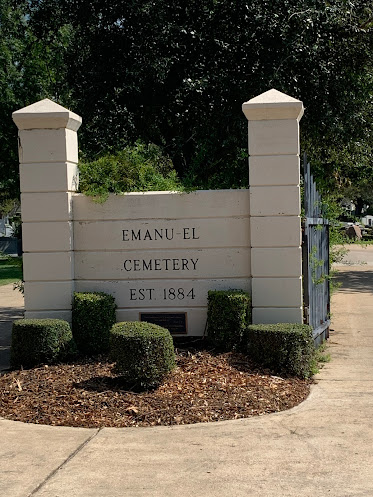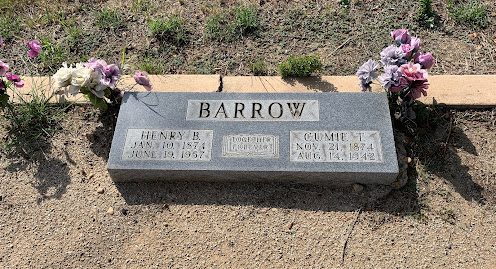A few more places of interest in the Dallas/Fort Worth area. First up was the Bureau of Engraving and Printing (BEP) in Fort Worth.
The BEP, founded in 1862, is a government agency with the US Treasury Department that designs and produces a variety of security products, most notably Federal Reserve Notes (paper money) for the Federal Reserve. The BEP is one of two agencies in United States producing money - the other is the United States Mint which produces coinage. There are only two BEP facilities in the United States - Washington D.C. and Fort Worth.
We toured the facility in Washington D.C. years ago when we were visiting but, unfortunately, I didn't remember too many details. We learned that this facility closed to the public during Covid and has yet to reopen.
In 1987, construction began on a second facility in Fort Worth. In addition to meeting increased production requirements, a western location would serve as a contingency operation in case of emergencies in the DC area; additionally, costs for transporting currency to Federal Reserve banks in San Francisco, Dallas, and Kansas City would be reduced. Any currency printed at Fort Worth includes a small "FW", usually located to the left of the bill's face plate number, and most also have larger back plate numbers. Currency production began in December 1990 in Fort Worth.
We were surprised to see the facility parking lot was relatively empty which made parking a breeze.
We walked up to the front to enter the facility and were surprised to see this.
No cell phones? No cameras? How in the heck do they expect bloggers to include photos with their posts? Yes, we asked to confirm and sure enough, we had to take our cell phones back to the truck. :-(
It was an interesting self-guided tour but, unfortunately, we had no way to record any of it. We looked in the gift shop for some sort of book with pictures and descriptions but they were wise to us and didn't have any.
We learned that approximately $526 million in paper currency is printed every day, over half of which originates in Fort Worth. We asked everyone we came in contact with how the money is moved from the Bureau and each person said "we have no idea". There is an airport nearby so we can only assume that has something to do with moving money.
We had to be content with just one photo of the outside of the building.
And then it was on to Dallas to make some cemetery visits. I'm sure most people think it's morbid to visit cemeteries but I've always found them interesting as each stone has a story. And it's interesting to see how people, famous or infamous, are remembered.
One large cemetery had several "famous" people to visit - Sparkman Hillman Memorial Park.
Who hasn't heard of Mickey Mantle? Nicknamed "the Mick" and "the Commerce Comet", Mickey (October 20, 1931 - August 13, 1995) was a professional baseball player who played his entire major league career (1951-1968) with the New York Yankees, primarily as a center fielder. He is regarded by many as being one of the best players and sluggers of all time. He was an American League MVP three times and inducted into the Baseball Hall of Fame in 1974.
The mausoleum was peaceful and very beautiful.
We found the crypt and were pleased to see that it acknowledged the impact he had on people. (This is what we had hoped
Kenny Stabler would have at his grave).
Even the Mantle children were there.
We got back in the truck to view some others.
Ross Perot may have been best known for his run for President of the US in 1992 against George H.W. Bush and Bill Clinton. In the election, Perot did not win any electoral votes but did win over 19.7 million votes for an 18.9% share of the popular vote. He ran for president again in 1996, establishing the Reform Party as a vehicle for his campaign, and won 8.4% of the popular vote against President Clinton and Republican nominee Bob Dole.
One more stop.
Tom Landry is regarded as one of the greatest head coaches of all time and was the first coach of the Dallas Cowboys, a position he held for 29 seasons (1960-1988) which is an NFL record. In addition to his record 20 consecutive winning seasons from 1966 to 1985, he won two Super Bowl titles, five NFC titles, and 13 divisional titles. He was named the NFL Coach of the Year in 1966 and the NFC Coach of the Year in 1975.
Many of you may remember Tom Landry's signature fedora (hat) that he wore on the sidelines when he coached the Cowboys. It was nice to see that he is remembered with the fedora.
Nearby was Emanu-El Cemetery. This brought a warm and fuzziness to me as the Temple we worshipped at as kids was Temple Emanu-El.
We found the area we were looking for......
We'd just visited the
6th Floor Museum where we remembered Abraham Zapruder, the clothing manufacturer who witnessed the assassination of President John F. Kennedy in 1963. He unexpectedly captured the shooting in a home movie while filming the presidential limousine and motorcade as it traveled through Dealy Plaza. The film is regarded as the most complete footage of the assassination.
RIP, Mr. Zapruder
And then it was on to visit two of the infamous people in the area.
Not in the mausoleum but nearby was Bonnie Parker, one half of the legendary crime duo Bonnie and Clyde, who traveled with their gang during the Great Depression. The couple was known for their bank robberies, although they preferred to rob small stores or rural funeral homes. They are believed to have murdered at least nine police officers and four civilians.
Bonnie Elizabeth Parker
1910-1934
Bonnie and Clyde wished to be buried side by side, but the Parker family would not allow it. Her mother wanted to grant her final wish to be brought home, but the mobs surrounding the Parker house made that impossible. More than 20,000 attended Parker's funeral, and her family had difficulty reaching her gravesite. Bonnie was originally buried in Fishtrap Cemetery, although her body was moved in 1945 to the new Crown Hill Cemetery to be buried alongside her mother.
Emma Parker
1885-1944
Of course we had to go across town to see Clyde Barrow. Thousands of people gathered outside both Dallas funeral homes, hoping for a chance to view the bodies. Clyde Barrow was buried in Western Heights Cemetery next to his brother, Marvin.
The Barrow brothers share a single granite marker with their names on it and an epitaph selected by Clyde: "Gone but not forgotten."
Their parents are buried alongside them.
The American National Insurance Company of Galveston, Texas, paid the life insurance policies in full for Bonnie and Clyde. Since then, the policy of payouts has changed to exclude payouts in cases of deaths caused by any criminal act by the insured.
Phew, that was a long day.



















































